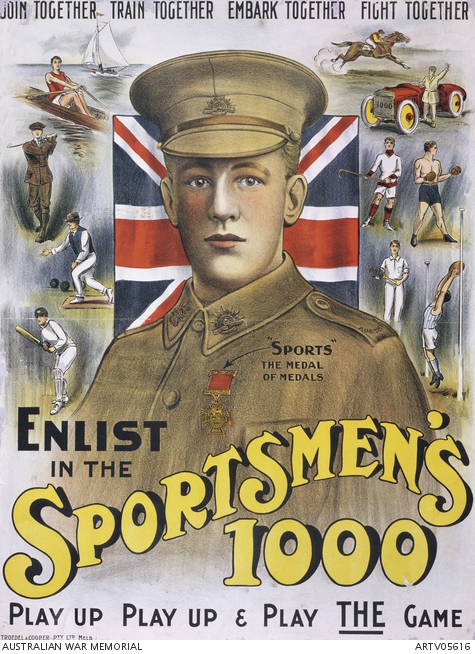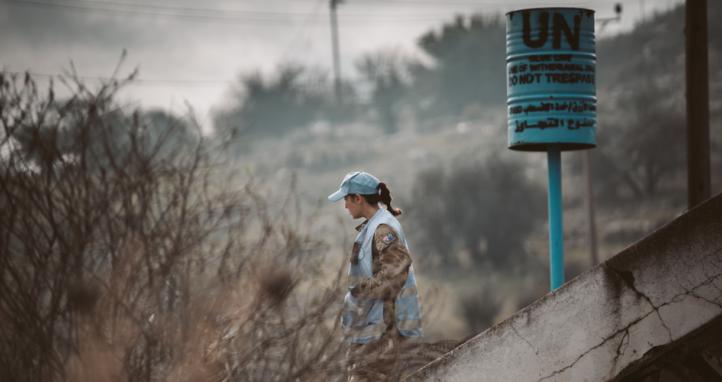Like many other Australians I played a lot of sport in my youth. Recently I had the privilege to support the Inter-Brigade AFL Carnival in November 2022 in Brisbane. I was one of 20 or so Australian Defence Force (ADF) personnel who support the ADF AFL circuit every year as umpires. Interestingly, while the players are all permanent soldiers, most of the umpires are reservists.
As a reservist myself, participating in Army sport is unlikely or even unheard of. Even though sports participation in the military is important for physical fitness and building morale and camaraderie, the presence of sport in Reserve units is limited. This article seeks to explain the benefits of sport in the Army to encourage more participation from Reserve soldiers.
A brief history of Army sport
The connection between sport and military service, for Australians, dates before the colonial era to the British Empire. The cultural zeitgeist of the period reveals the true interrelationship between the military, wider society, and sport. The quote “the battle of Waterloo was won on the playing fields of Eton" is popularly ascribed to the Duke of Wellington and while the famous quotation was probably never said by the man who defeated Napoleon, the phrase’s popularity captures the culture of the time. The games and sports at British schools and universities developed those qualities that made good soldiers.
Sports that had been played socially for millennia were codified, legalised, and directed towards a national spirit. Governments used this spirit to turn schools and universities into factories of nationalistic fervour. The building of a national spirit and a national identity coalesced in the late 19th century in the establishment of national sporting teams and, as the 20th century began, in the wholehearted enthusiasm of the public to idealise ‘the sporting man’ as the peak of civilised progress.
Nowhere was this more evident in the British Empire than in the newly federated Commonwealth of Australia. Due to the relatively high physical standards for enlistment at the outset of the First World War, the mythos of Australian sporting exceptionalism grew. Local sports players signed up in droves. Recruiters tapped into these collective ideals during the First World War.

While these notions mellowed over time, the idea of Australians as a race of athletes continued. In 1965, a whole 50 years since Gallipoli, the Canberra Times wrote that “sport is just one activity at which the Aussies excel. Their soldiers bravely fight aggression in Borneo and Vietnam”.
Away from the fighting at the front, sport also provided opportunities to maintain morale. From soldiers on troop transports organising games on board, to keeping boredom away by running inter-unit and inter-service matches at camp; Australian soldiers have used sport to have fun, build rapport and engagement, and maintain morale. In a famous example, they have even used sport as part of a deception plan – a cricket match on Shell Green at Gallipoli in the midst of the evacuation.
Sport in the modern Army
As the nationalistic fervour of the early 20th century relaxed, sport in the ADF grew and became more organised. Yearly competitions and tournaments fill the calendar of the Australian regular soldier. Given the state of current socio-politics, where public money is scrutinised and inspected for excess and waste, it is interesting to see the size of Army’s sporting program. A program, which to many in the public’s eye, may seem as extravagant or superfluous.
The reasons for Army’s sporting programs are two-fold:
- Most of our popular games and sports mimic warfare – meaning that the qualities developed through sport enhance Army’s capability.
- Sport is a key aspect of enhancing Army’s internal and international relationships.
Simply put, sport mimics warfare. The competitive nature and physical demands of sports provide opportunities for soldiers and officers to physically and mentally prepare for war. While not all sports develop physical fitness, they all encourage critical thinking and competitive strategising. Team sports develop camaraderie, leadership, and teamwork. Individual sports develop independence and mental resilience.
In 2014, the then Chief of the UK General Staff, General Sir Nicholas Houghton, explained the importance of sport to military life. He said “Sport produces soldiers who build and lead teams by habit and reflex. It generates and maintains cohesion … It encourages leaders to think clearly, confidently, and positively when under pressure. And fundamentally it feeds a winning culture and ethos that inspires hunger for success on the battlefield”. These qualities enhance Army’s people.
Secondly, sport allows networking both within and outside of Australia. For Army reservists, sport provides opportunities to meet full-time soldiers outside of the demands of rigorous deployments or exercises. Examples of sport building friendships include a game of cricket played between Australian and British POWs at Changi, a combined British and Commonwealth Forces Rugby Union team playing against Japan during the Korean War, and soldiers from the 1st Australian Logistic Support Group playing the Vietnamese provincial side at Ba Ria in South Vietnam in 1971. Furthermore, sport builds community engagement within Australia, especially for those members transitioning within, between, or out of the services. These connections build the skills for our people to operate in the human dimension when on operations (domestically or overseas). These skills and connections then support our veterans in the community, and for them to support our community.
Sport in the Army Reserves
Considering the multitude of benefits that sports provide to the Army across a range of fields, it is disappointing to see minimal participation from Army reservists in ADF sport. The ADF’s policy is that participation in sport as a SERCAT 3–5 member (not on SERVOP C) occurs as ‘unpaid duty’.
The ADF Sports Cell does not hold an allocation of funds to pay Reserve personnel. Army’s own policy is the same and restricts participation further by stating that Reserve personnel can only attend where a member of the Permanent Force in unavailable. Combined, these measures restrict access to the benefits provided by sport for reservists. Yet, under the current Army Individual Readiness criteria, reservists are required to meet the same fitness standards as those of the Permanent Forces and must train for this in their own time.
While it is easier for reservists to engage in civilian sports than their permanent counterparts (reservists do not need to seek permission to play sport in their own time), any injuries arising from the activities are an individual’s responsibility. They can only be regarded as compensable if they are approved and authorised under unit Routine Orders beforehand. For participation in all ADF sports, such as an inter-Brigade AFL Carnival, both Reserve and Permanent members must obtain chain-of-command approval.
Reservists who participate in civilian sports miss out on the opportunity to network with fellow soldiers and allied nations. This has begun to be rectified as the Army develops a 10-year strategy, due midway through 2023, to “operationalise, professionalise and diversify” Army’s Sports Program to deliver capability outcomes. This has already materialised in Forces Command where Reserve members can be paid for participation as players or managers in an endorsed civilian sport.
What this will look like practically is yet to be seen. Ultimately, the intent is to secure appropriate funding across Army for effective participation by reservists. I hope the Reserve units will be properly allocated funds to ensure the appropriate command, supervision, and care of Reserve soldiers.
Commander Considerations
George Orwell once commented that “sport is war minus the shooting”. There may be fewer brawls and less excessive violence in modern sport than in previous decades, but the casualties of sport still have a significant effect on Army’s capability. A study conducted from 2012 to 2014 found that “sports participation accounted for 11% of reported injuries” in the ADF and was the third most common activity to cause injury, while almost 50% of all working days lost in the ADF are as a result of sport participation and sporting related injuries. This is unsurprising considering that sporting injuries occur at roughly the same rate in the civilian world.
Reservists participate in shorter, intermittent bouts of active service and do not typically have the opportunity for the same amount of regular physical conditioning as regular army personnel. Dylan McDonald et al. (2016) compared workplace health and safety incidents between regular and reserve personnel. It is an interesting read for commanders and physical trainers of all service categories.
The study identified that substantially lower proportions of Army reservist incidents involved sports, whereas substantially higher proportions were associated with combat training, manual handling, and patrolling when compared with the regular Army. McDonald et al. (2016) concluded that while Reserve personnel may have a good level of general fitness, they are less likely to engage in combat-oriented fitness that involves load carriage and the manual handling of heavy loads. For the corps where combat training and patrolling are not a regular part of training, sports may prove to be a more safe and efficient training solution.
Any reservists interested should conduct research on identified sports as most ADF approved sports have active social media and online presences. You should also keep an eye out on base notices for try-outs and schedules.
Conclusion
Sport has played an important role in the Australian Army since its inception and the benefits it brings to operational and peacetime duties ensures it will be a critical part of service life well into the future. I encourage all reservists to seek out and apply to join Army sporting activities – whether in a playing, coaching, refereeing, supporting, or managing role. I also urge those regular Army players, coaches, referees, supporters, and managers of ADF sporting teams to reach out to Reserve units and personnel and encourage them to join in.









